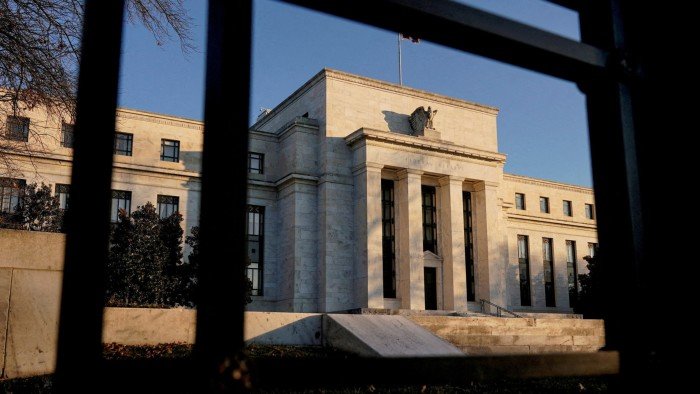
Unlock the White House Watch newsletter for free
Your guide to what Trump’s second term means for Washington, business and the world
The Federal Reserve cut its outlook for the US economy on Wednesday, with policymakers split on whether they would be able to reduce interest rates at all this year as Donald Trump’s tariffs bring risks of higher inflation.
Fed officials on Wednesday cut their forecasts for economic growth and boosted their outlook for inflation as Trump’s levies on America’s trading partners ricochet across the world’s largest economy.
The Federal Open Market Committee held rates steady for the fourth meeting in a row at a range of 4.25-4.5 per cent, despite the US president calling earlier on Wednesday for chair Jay Powell to slash borrowing costs by at least 2 percentage points.
Just hours before the decision Trump called the Fed chair “stupid” and asked whether he could “appoint myself” to the central bank.
Powell said at the press conference following the Fed’s rate decision that “for the time being, we are well positioned to wait to learn more about the likely course of the economy before considering any adjustments to our policy stance”.
But he cautioned that “our job is to make sure that a one-time increase in inflation doesn’t turn into an inflation problem”.
Projections released on Wednesday showed growth in the world’s largest economy would register 1.4 per cent for 2025 — substantially weaker than last year, with unemployment rising from its current level of 4.2 per cent to 4.5 per cent and personal consumption expenditures inflation increasing from an April figure of 2.1 per cent to 3 per cent.
In March, the median expectation among US rate-setters was for the economy to expand by 1.7 per cent, unemployment to rise to 4.4 per cent and personal consumption expenditures inflation to hit 2.7 per cent.
The Fed’s “dot plot” of monetary policy estimates still showed a median forecast that the central bank would make two quarter-point rate cuts this year. But officials are becoming more divided, with an increasing number now ruling out any reductions in borrowing costs for the remainder of 2025.
There were still 10 members expecting two or more quarter point cuts this year. But seven now forecast no rate cuts and two are expecting one cut.
Paul Ashworth, chief North America economist at Capital Economics, noted that there were “two very distinct camps developing within the FOMC”, with some policymakers pencilling in lower borrowing costs as they fret about growth and unemployment and others anticipating no reductions this year as they focus on inflation risks.
Recent inflation data have been tame, but many economists expect price growth to increase in the coming months as companies pass on the costs of tariffs. Business surveys have also pointed to high levels of uncertainty among company executives over demand across the economy and their own costs.
US markets were muted following the Fed decision, with the S&P 500 equities gauge little changed. The two-year Treasury yield, which is sensitive to rate expectations, slipped 0.01 percentage point to 3.94 per cent.




